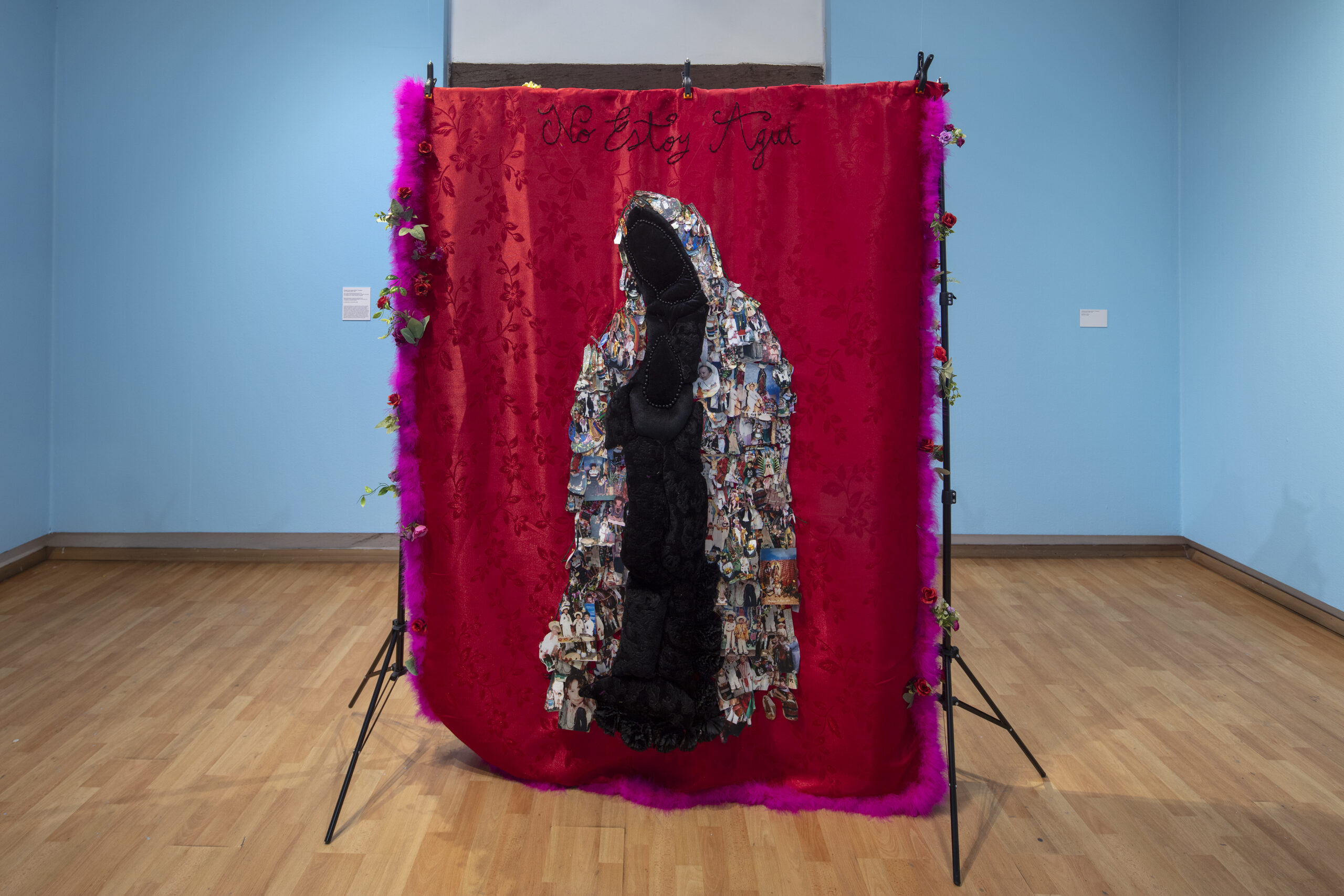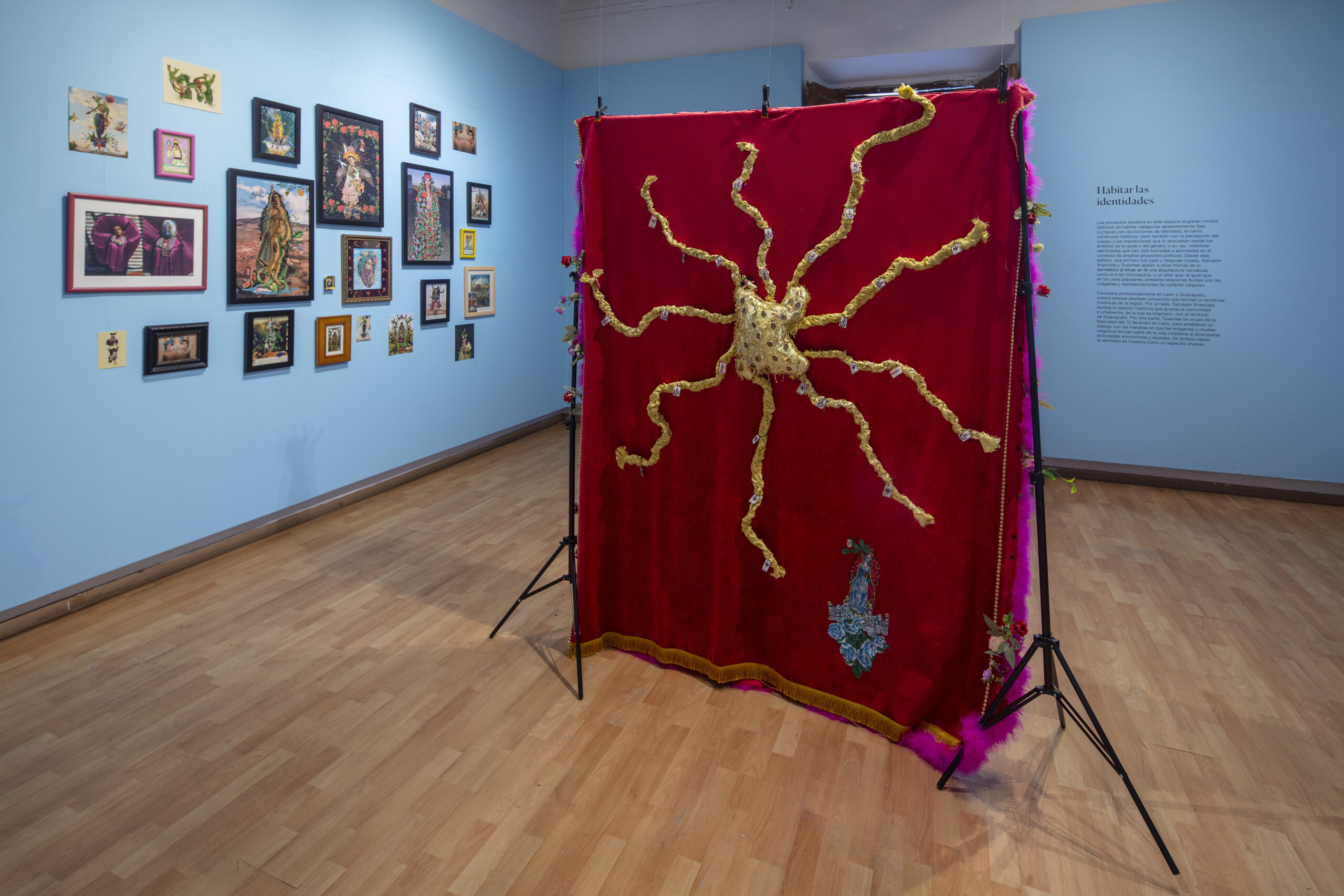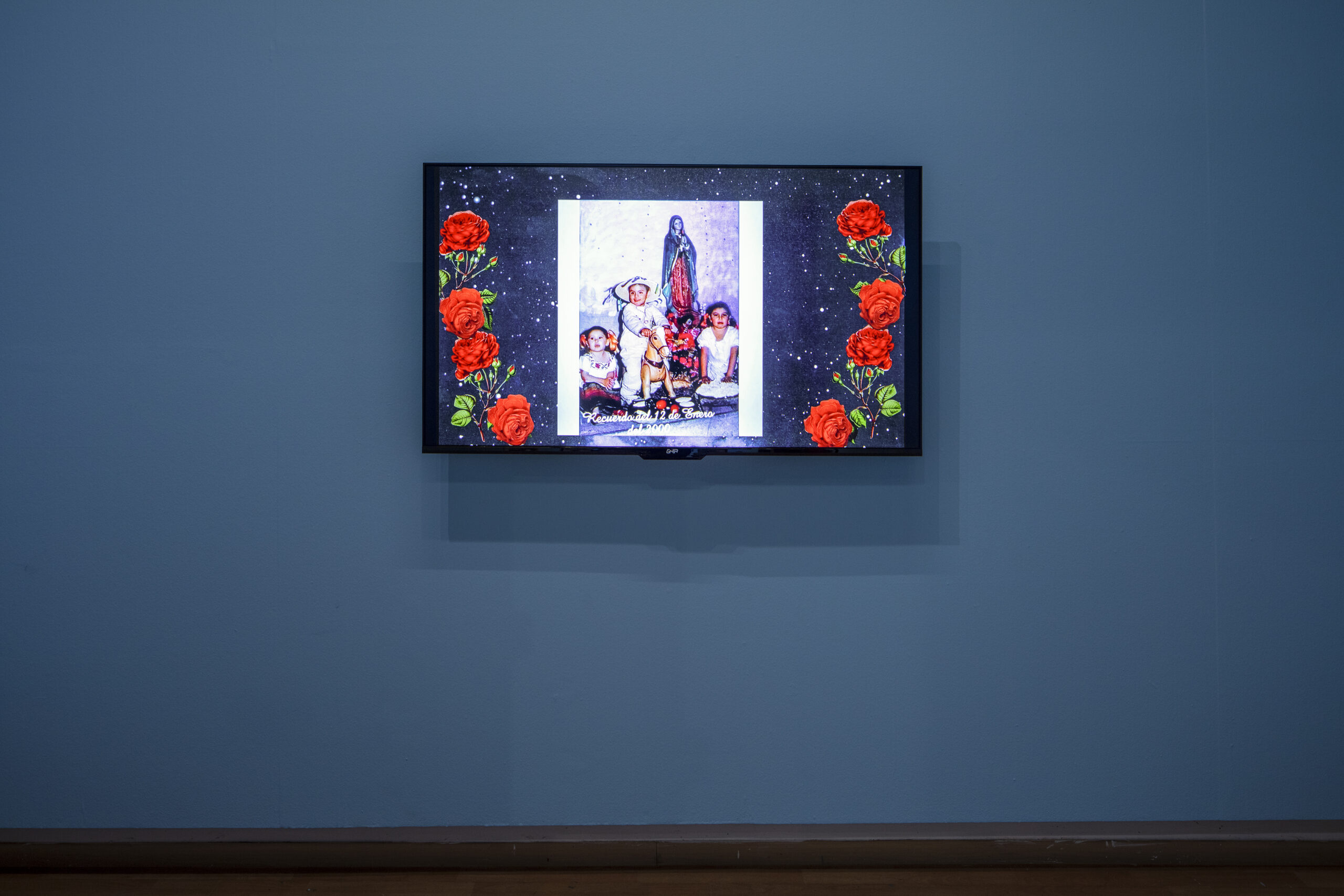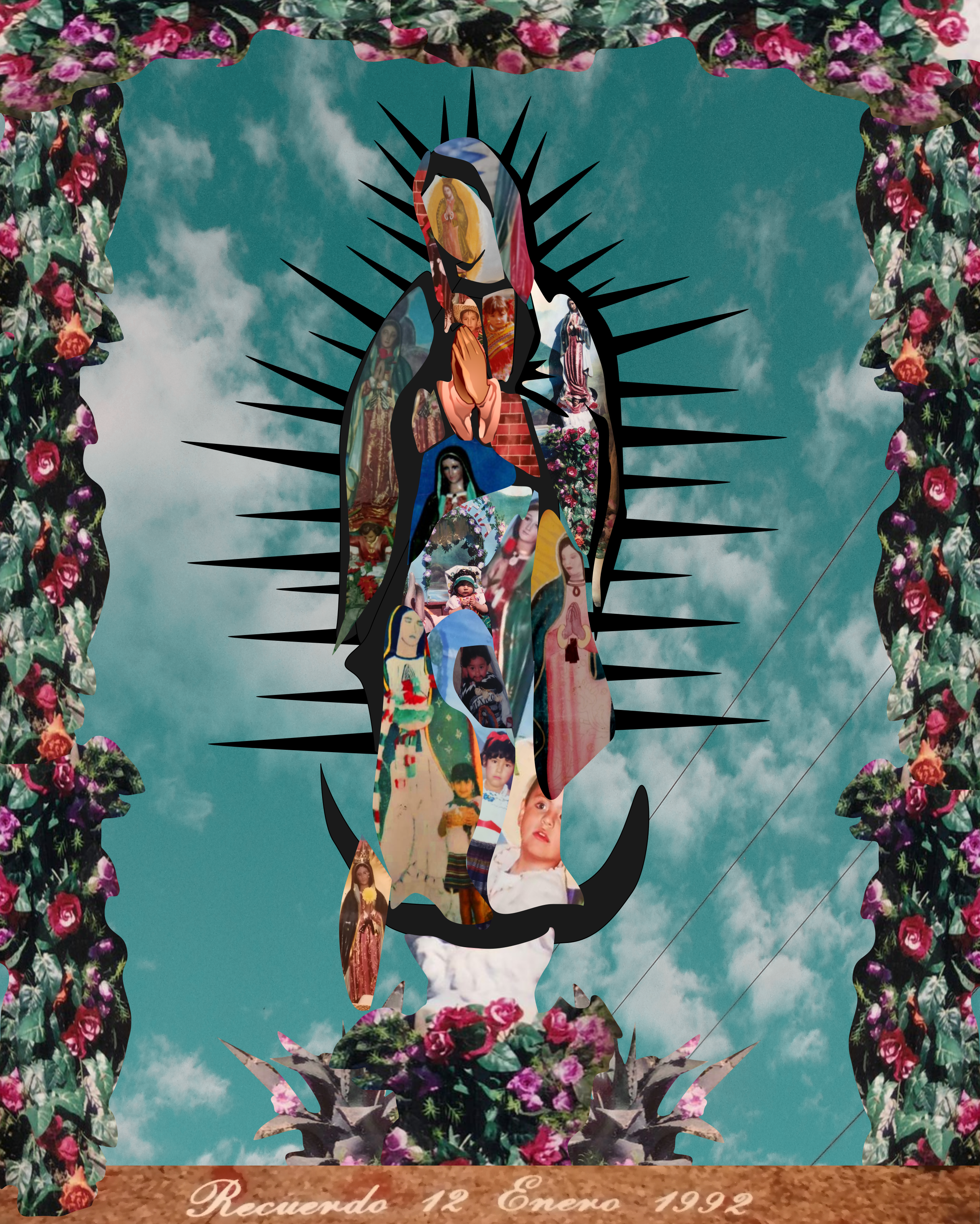Tuxamee
(León, Guanajuato, México, 1996)
Artist and cultural promotor who works in collage, installation and performance, centered on the lived context in León. He also writes about studies that have been produced regarding urban “barrio” attire as well as that worn by rural communities in the Mexican states of Tlaxcala, Puebla and Guanajuato. The artist received a BA in culture and art at the Universidad de Guanajuato. He has collaborated with the Nawi Xochitelpoch collective, at San Miguel Canoa in Puebla, where members study Nahuatl traditions as well as the town’s famed carnival celebrations. He has exhibited work in England, Greece, Mexico and the United States. Standout solo shows include El Cuarto de Aztlán, at the Museo de Arte e Historia de Guanajuato, 2023; Gramolapirata at ArtSpace in Mexico City, 2023 and La Máscara de la Maringuía at the Instituto Cultural de León’s Galería Jesús Gallardo, 2021. His roster of collective shows includes participation at Rostro, staged at Charlie James in Los Angeles in 2022, and in the same year he was awarded the Activisme Creative prize by the Cultures of Resistance Foundation.
Que no estoy aquí (Enclaustramiento puritano), 2024
Set of photographs on fabric, blessed and bonded velvet inlaid with various materials
Mandorla Guadalupana (¿Utopía de la dignidad?), 2024
Set of photographs on fabric bonded assembly in religious-style fabric inlaid with various materials
In collaboration with Grecia Edith Murillo
Guadalupanxs, 2020-23
Collage selection
12 de enero, 2024
Video (color, sound)
59 sec.
Wayayay, 2021
Video (color, sound)
1 min. 13 sec.
Tuxamee’s practice takes a special interest in textile and collage, addressing identity issues using the intersections between religious iconography, dissidence, and popular culture. The pieces in the room focus on the popular dimension of religion, both in domestic and public spheres. At the center are photographic sets that question modes of representation at Leon’s January 12th festival, known as “Indians’ Day.” Since 1876, the custom has been to visit the sanctuary of the Virgin of Guadalupe and for people—often children—to take photos of themselves as “Juan Dieguito” or “Lupita” against backdrops placed along the route. The photographs comprising one of the sets’ mantles were recovered from family archives. The walls of the show exhibit a series of collages reminiscent of the altars usually found in homes.
bienal



